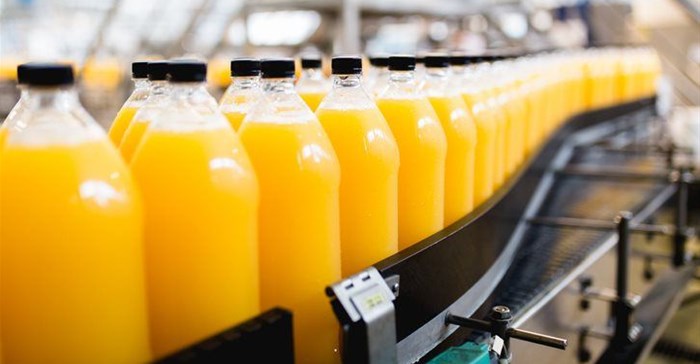
Subscribe & Follow
#AfricaMonth
In the news
Supply in demand: The digital future of consumer goods

Combined with globalisation, and evolving technology and consumer trends, it’s becoming harder and harder for traditional sales and distribution channels to stay relevant.
With the pace of change having increased like never before during the pandemic, agility in a company’s ability to innovate and engage with customers directly is critical to remain competitive. To compete in the future, companies need a 360-degree, data-driven view of their operations and supply chains, as well as a deep understanding of their customers and what they want.
Right now, there’s uncertainty around business models, locations and even which products and services to provide. The key to success is focusing on five keys areas – connectivity, digital supply chain, intelligent manufacturing, smart workforce and channels to market.
1. Connectivity
More and more factories are moving beyond traditional automation to a fully connected and flexible plant, using a constant stream of data from connected operations to learn and adapt to new demands. To operate, smart factories need to maintain a constant connection between equipment on the floor and an IoT platform in the cloud. If the connection is broken or network security is breached, companies will experience service disruptions and unexpected downtime.
5G-enabled smart factories and intelligent automation – which can give companies more efficient use of materials, better product quality, improved safety, shorter workweeks for labour and reduced factory lead times – will become a cornerstone of success in this space.
2. Digital supply chain
Warehouses have a crucial role to play in maximising organisational efficiency, and in turn, revenue. They have perhaps the biggest role in the supply chain, and the management of the warehouse can have a significant impact on a company’s bottom line. Inventory visibility and management using technology that keeps them up to date on where products are is crucial, as today’s shopper wants visibility into the entire order fulfilment process – from accurate availability at purchase to tracking information during shipment.
Fulfilment visibility is now essential to compete and improve the bottom line. Digitally enabled transport logistics can help companies find cost-efficient delivery routes and get deliveries to their customers quickly.
3. Intelligent manufacturing
Companies can limit the impact of supply chain disruptions on the business by using AI to identify risks within the wider supply chain, which in turn can help to ensure that supplies are delivered consistently and on time, and give the business advanced warning of where it may need to enact contingency plans.
There’s one significant asset that consumer goods companies have not yet optimised: their own data. Bringing IT and OT together using both wired and wireless connectivity and having the right analytical tools to make sense of the data gathered in this way, offers the opportunity to realise huge gains such as less downtime, increased productivity, energy savings, improved asset utilisation, reduced maintenance costs and adherence to compliance.
In addition, visualisation technologies like virtual reality (VR), augmented reality (AR), and 3D printing can also improve the rate and flexibility of R&D. AR immersive tools can speed up decisions and accelerate outcomes. AR can also be used to offer blended training, which is proving much more effective than more traditional methods.
In a recent PwC study, employees who had taken VR training said they felt 40% more confident to act on their training than classroom learners and 35% more confident than e-learners. They also felt four times more focused than e-learners – and completed their programs 1.5 times faster.
4. Smart workforce
Connected digital factories require a new way of working, so companies will need to build a digital workforce. Recruitment and retention of the right people is key. Just as important will be working closely with the company’s people before and during the implementation of any new technologies. We’re entering a new era of human-machine interaction and it’s critical not to underestimate the importance of people in the digital factory.
5. Channels to market
The pandemic has changed how consumers shop, with greater emphasis on digital channels. Consumer-decision journeys now involve more digital touchpoints and are becoming more complex, but consumers still expect a consistent presence – online and offline – so that an omnichannel approach isn’t simply nice-to-have but required.
Different channels are often siloed in different parts of the business, constrained by historical organisational fit rather than today’s omnichannel consumer. But delivering meaningful value to consumers requires a holistic, full-funnel approach to commerce, including the right balance of distribution channels and tightly integrated routes to market. So, companies need to focus on the consumer and drive connections at every point along the customer journey.
The growth of direct-to-consumer and subscription services during the pandemic also means that many consumer goods companies that have traditionally only sold their products through retailers are beginning to experiment with their own direct-to-consumer (D2C) models. This channel will be incredibly powerful to get closer to consumers, obtain insights and take any learnings to the rest of the business.
As consumer goods companies try to knit together a massive choice of different platforms, services and applications, it’s very easy to end up with disjointed, dislocated experience. That’s when the technologies that were meant to make things simpler and better, just make things more complex to manage. However, as part of an integrated solution that includes the right security and connectivity, these technologies will deliver great business results.
About Jose Gastey
Jose Gastey, Director: Manufacturing, BT.Related
Enter the 2025 Africa Supply Chain Excellence Awards 26 Mar 2025 Navigating a future in logistics: Your pathway with IIE Rosebank College 18 Oct 2024 Supply chain education is crucial says Sapics 25 Sep 2024 Supply chains should make the world better, not worse – it’s time for a rethink 15 Aug 2024 Digitisation is vital to ensure resilient supply chains. Here's why... 24 May 2024














